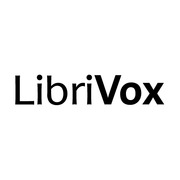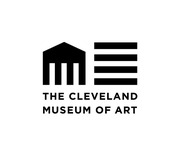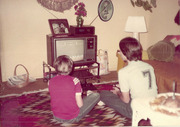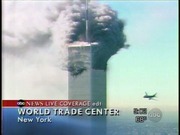tv [untitled] November 26, 2013 8:30am-9:01am PST
8:30 am
recommendation that you implement as over time, but even though there is a stated compliance date, it's prioritized by local agencies based on need and funding availability. i don't believe we'll be losing any funding over this, but we are very cognizant of the deadlines and taking it very seriously. one of the things we are doing is taking our data base of all the signs and converting it into a system where it becomes inventory control. we'll know exactly where all the 200,000 signs of all the cities and the age of them when they were installed. one of their methods that their federal government allows us to use is to either go out to the field with a device and measure the reflectivity of each sign which
8:31 am
is labor intensive and not practical and you look at data as a proxy to see what we are using the age to sign as a proxy for the need for replacing the sign due to re flectivity. within the next week, we'll have the data converted. then from that point on, we'll be able to start using the data base to guide us towards reevaluating the signs. there is no risk of danger of massive collapse from the city from our vendor. the signs have a 12-year warrant and i emphasize they have a good
8:32 am
state. >> that's good, because you heard from item no. 1. we have a lot of work to do. we could afford to lose any funding. thank you mr. yee. >> the next audit is for the adult probation department which has 21 recommendations. 30 are closed. we still have one open. one of the reasons we revisited this audit because because they had very serious findings. probation officers had excessive case loads. some probationers were receiving low levels and appropriately supervised probationers were week. as a result of the department going major changes
8:33 am
due to the legislation we decided not audit. however they have made significant improvement and they are here to discuss that with you. >> chief, thank you for being here. please. >> i will be very brief. thank you very much chair cohen and supervisor campos. i really want to recognize the department's progress made. all 31 items are closed. i think it was amazing the progress we have made and i would like to recognize the staff of the department and special lau the management and the administrative team. we have created whole new reentry functions and done a lot over the last 4 years specifically targeted at correcting all the audit items in addition to the reform. the original audit in 2000 resulted in 31
8:34 am
recommendations and performance measurement and public , policies procedures and information tracking, reporting system, staffing and travenlth virtually every aspect of the department. as of september 12, '30 of the recommendations were closed recognized by the city auditor the last recommendation was related to a case standards management policy for supervision levels. what's happened in the last years with we've implemented a tracking system for clients and developed regular operational reports and an oversight committee was formed and we are in sync with what is in the status of the department. i know that sounds so small, but
8:35 am
for our department it was big. in the history of the department over 100 years they never had a strategic plan and now we do. and produced the first annual report last years since 2008. these administrative things that are so important to tracking and managing the direction of the department, we also implemented a comprehensive revision of the department's policies and procedures which are 10-15 years old which are in partnership with uc berkeley and two-thirds are almost complete and a 30 more under the revision. we hired staff and developed training and we achieved 100 percent compliance for the last 4 years. every single employee of the department has received one. we received 100 percent compliance
8:36 am
for training for correctional requirements for one staff. that is extremely difficult to do. implemented and risk and needs assess many. -- assessment and using based practices. we developed risked base policies and currently upgraded to a new electronic management system that will replace the old one. all of these reforms have resulted in 2013 in july received the award for the american probation award which is as far as you can come from where we started out so many years ago with all the of these deficiencies. the city has realized the significant return on this investment. >> okay. two more. in 2013 the completion rate of 78 percent. 51 percent of our clients are
8:37 am
ab 109 clients are completing their 12-month supervision satisfactory. the average jail population has decreased by 35 percent from 1954 to 1267 during the time of realignment with over 700 individuals having been realigned. the average population is a $35 million annual reduction to the city and county of san francisco. >> thank you. we'll call another hearing for all of those successful status that you just covered. the last one? >> the final audit was the business enterprise program. 11
8:38 am
which are closed one is still open and the remaining open recommends as the contract monitoring to investigate the needs for sanctions in the three contracts covered by the audit. the audit found three contractors used for in eligible for the status and the contract monitoring division is here to discuss those. >> okay. where is the person? there she is. if you can just specifically just talk about it. >> thank you. i know it's late. we've actually implemented, we had a tracking system in 1997. that tracking system went way in 2009. we have not had a tracking system sense them. i took over the monitoring system. we started looking at all the issues that we brought forward on the audit and we
8:39 am
addressed those issues. what we found out is, we have jurisdiction on 14b is our contractor for not following up the practices. we manually did an intensive investigation. and what we found was that there were some personnel issues that happened at these two dements. departments. >> in one sentence can you give me an occasion about why the program went away? >> the program did not. it was the tracking. it was the decision that was not to have it anymore. >> who made that decision? >> i believe it was the x director at that time at 2009. we can go into detail as to what happened. >> we don't have time. >> but now we instituted a new tracking system that began with
8:40 am
contracts advertised after july 2013 which is going to assist staff with day-to-day revenue review. with this particular audit what we found after extensive research and in coordination, what we found. we conducted an extensive training with 62 project managers at this department. and we trained them specifically on what they can and can't do in order to enforce the ordinance. we did this after the csa submitted the report to you. we had discussed this with the csa. that was what we had decided to
8:41 am
do is actually do an extensive training to the department personnel. >> thank you for sitting 32 -- through an entire hearing. that is appreciated. i would like to talk to you afterwards. please come up and finish. >> i am done. >> i would like to open public comment for item no. 3. no public comment. public comment is closed. supervisor campos would you like to say anything? >> i would like to thank you for the work and all the three agencies for their response. it's exciting to see that this is taken very seriously, so thank you very much. >> thank you. the department should feel very good about themselves for all the things that they have accomplished in a short period of time. so seeing that public comment is closed. mr. campos, could i entertain a motion from you to
8:42 am
continue this item to the call of the chair? >> so moved to continue to the call of the chair. >> thank you, this passes unanimously. madam clerk are there any other items? >> no other items to discuss. >> thank you, this meeting is adjourned. thank you everyone. [ meeting is adjourned ] >> >> >> >> welcome to "culturewire." today we are at recology. they are celebrate 20 years of
8:43 am
one of the most incredibly unique artist residency programs. we are here to learn more from one of the resident artists. welcome to the show, deborah. tell us how this program began 20 years ago. >> the program began 20 years ago. our founder was an environmentalist and an activist and an artist in the 1970's. she started these street sweeping campaigns in the city. she started with kids. they had an exhibition at city hall. city officials heard about her efforts and they invited her to this facility. we thought it would coincide with our efforts to get folks to recycle, it is a great educational tool. since then, we have had 95 professional artists come through. >> how has the program changed over the years? how has the program -- what can
8:44 am
the public has an artist engage with? >> for the most part, we worked with metal and wood, what you would expect from a program like ours. over the years, we tried to include artists and all types of mediums. conceptual artists, at installation, photographers, videographers. >> that has really expanded the program out. it is becoming so dynamic right now with your vision of interesting artists in gauging here. why would an artist when to come here? >> mainly, access to the materials. we also give them a lot of support. when they start, it is an empty studio. they go out to the public area and -- we call it the big store. they go out shopping, take the materials that, and get to work. it is kind of like a reprieve, so they can really focus on their body of work. >> when you are talking about
8:45 am
recology, do you have the only sculpture garden at the top? >> it is based on work that was done many years ago in new york. it is the only kind of structured, artist program. weit is beautiful. a lot of the plants you see were pulled out of the garbage, and we use our compost to transplant them. the pathway is lined with rubble from the earthquake from the freeways we tour about 5000 people a year to our facility, adults and children. we talk about recycling and conservation. they can meet the artists. >> fantastic. let's go meet some of your current artists. here we are with lauren.
8:46 am
can you tell us how long have been here so far and what you're working on? >> we started our residency on june 1, so we came into the studio then and spent most of the first couple weeks just digging around in the trash. i am continuing my body of work, kind of making these hand- embroidered objects from our day-to-day life. >> can you describe some of the things you have been making here? this is amazing. >> i think i started a lot of my work about the qualities of light is in the weight. i have been thinking a lot about things floating through the air. it is also very windy down here. there is a piece of sheet music up there that i have embroidered third. there is a pamphlet about hearing dea -- nearing death. this is a dead rabbit. this is what i am working on
8:47 am
now. this is a greeting card that i found, making it embroidered. it is for a very special friend. >> while we were looking at this, i glanced down and this is amazing, and it is on top of a book, it is ridiculous and amazing. >> i am interested in the serendipity of these still life compositions. when he got to the garbage and to see the arrangement of objects that is completely spontaneous. it is probably one of the least thought of compositions. people are getting rid of this stuff. it holds no real value to them, because they're disposing of it. >> we're here in another recology studio with abel. what attracted you to apply for this special program? >> who would not want to come to the dump? but is the first question. for me, being in a situation that you're not comfortable in
8:48 am
has always been the best. >> what materials were you immediately attracted to when you started and so what was available here? >> there are a lot of books. that is one of the thing that hits me the most. books are good for understanding, language, and art in general. also being a graphic designer, going straight to the magazines and seeing all this printed material being discarded has also been part of my work. of course, always wood or any kind of plastic form or anything like that. >> job mr. some of the pieces you have made while you have been here. -- taught me through some of the pieces you have made while you have been here. >> the first thing that attracted me to this was the printed surface. it was actually a poster. it was a silk screen watercolor, about 8 feet long. in terms of the flatwork, i work with a lot of cloddish. so being able to cut into it come at into it, removed parts,
8:49 am
it is part of the process of negotiating the final form. >> how do you jump from the two dimensional work that you create to the three-dimensional? maybe going back from the 3f to 2d. >> everything is in the process of becoming. things are never said or settled. the sculptures are being made while i am doing the collages, and vice versa. it becomes a part of something else. there's always this figuring out of where things belong or where they could parapets something else. at the end goal is to possibly see one of these collage plans be built out and create a structure that reflects back into the flat work. >> thank you so much for allowing "culturewire" to visit this amazing facility and to learn more about the artists in
8:50 am
residence program. is there anything you like our viewers to know? >> we have art exhibitions every four months, and a win by the public to come out. everybody is welcome to come out. we have food. sometimes we have gains and bands. it is great time. from june to september, we accept applications from bay area artists. we encouraged artists from all mediums to apply. we want as many artists from the bay area out here so they can have the same experience. >> how many artists to do your host here? >> 6 artist a year, and we receive about 108 applications. very competitive. >> but everyone should be encouraged to apply. thank you again for hosting us. >> thank you for including us in "culturewire." ♪ >> good morning, everyone. thank you for being here. it's a beautiful day in san francisco. my name is joaquin
8:51 am
torres the director of economic and work force development and the mayor's investing neighborhood initiative which is an office coordinates through out our neighborhood commercial services that our private partners bring to bear. it also includes something we realize in the city which is the central market economic strategy. one of those objectives is ensuring that central market is a center here in our city. all of us here are here today to celebrate a very important milestone of building up creativity in our city. to kick us off to talk about this achievement is our mayor, ed lee. >> thank you, joaquin. he works
8:52 am
very hard and others that scour these blocks all the time working with all the residents and artist and small businesses have been wonderful. as many of you know i have worked very hard on the revitalization of market street. we have shown some success, but we've always said and i want to emphasize this, you've heard me say this before, the artist in the community led this effort to begin with. they took a lot of risk. so we've never allowed them to escape from our mind about the future of mid-market. they have always been in our sight whether they are living here, working here, we want to make sure they are staying here. yes, rents are rising
8:53 am
because of our success, but we still should take care of everybody. this is our city 100 percent. today we are announcing one special effort thanks to the can an foundation, wonderful organization, and their collaboration with the community loan fund working with our offices and community base non-profits, we have established something that has been in the works for a number of months, but it's now established well and it's called cast. that is community arts stabilization trust. cast in short for theatre cast. everybody gets that except for those like me who are new to this. i want to be part of that cast because they are taking a concept that i think you will
8:54 am
see repeated in other sectors. that is, when you are a subject and victim to property ownership, you have to change that around. so for the arts, kenneth rain an and the community loan fund, we decided to let us try to turn that paradigm around and become property owners ourselves for the benefit of the community arts program. that's the concept here under cast. rather than just announce it, we are actually announcing the ownership of at least two buildings they have already taken control over at 80 church street which is formally called the doll house. the ownership is now under cast as well as the luggage store. isn't that a wonderful thing to have control over your own destiny? [ applause ]
8:55 am
it's kind of like somebody owning their first home, they have begun to own their own destiny. that's a small part but a very important part of the whole puzzle of keeping everybody on market street engaged and participating in this economic success. i want to say thank you to the rain an fund, thank you to northern california cal community loan program and the luggage store and to all the tenants involved in this building. right now it's not just luggage store, it's hospital house, the arts program that even the tech programs decided they would donate. we got a donation from visual arts to supplement the house and the representative for all the artist. a good portion that want to be here
8:56 am
and stay here and continue practicing the arts for all of us. arts are part of success for san francisco, they are part of the culture, they are part of the international flavor of san francisco. we are going to continue doing everything we can to support their existence, their survival and their success. when we drafted the market street economic strategy, we had arts right there focused. now we've got some answers, now we've got some models to exhibit out there. so these first two successful building owner ships are just the beginning. when the arts programs established themselves as part owner of these wonderful buildings we have here, they are going to also need the continued support of our city, of our residents, of the tech workers up and down and small businesses up and
8:57 am
down market street to not only continue with performances but to support them. arts is about community action and support. i want to thank the arts, the arts commission for being great partners with this and they are also the effort. and i want to thank karen as well. she's been a strong leader to make sure we took care of existing assets and people who were already here. we often talk about people already here, we have to build upon them as the current assets before we invite new people to come. as we invite new people to come, they also have to experience their contributions to the existing culture of this city and of this wonderful market street. you know you are already seeing
8:58 am
the holiday lights appear on market street. what we have towards this holiday what we are doing for residents at 1047 and 1069 to keep them here, the small businesses we are inviting here, the arts program here today we are going to have a lot to celebrate these holidays because they are the same people that have been here forever that still want to be part of the success at san francisco. i want to thank everybody for working together and i know we'll go through a lot of the specifics. this is a wonderful day to announce the existence of cast and thanks to the rain an and loan foundation. thank you very much. >> thank you very much, mr. mayor. when you talk about leadership, it's always important to have the local leadership of your supervisor and the incredible advocacy and teaching that you do for all of us to ensure we are serving the community to the best of our
8:59 am
ability. now we have one of our best supervisors jane kim. >> base guitarist. my first show was at the shop many years ago. speaking about the arts in the 2000 i cofounded a space here in san francisco in south of market. i remember having a performance arts space, we moved three times in 6 years and finding spaces to support them was in incredibly challenging during that time. we were eventually able to share spaces through other arts organizations, but i do remember how important permanent physical space was. that's why it's so exciting to be here 13 years later to celebrate the acquisition of
9:00 am
two very important buildings here in the tenderloin and mid-market for two organizations that have held strong in the mid-market area for a long time and that's leading and -- luggage store gallery, i want to recognize mr. smith and jessica from counter paul. it's so fun to be able to kind of switch roles as our arts community grows. i remember going to the intersection of the arts and now they are here a block away at 5 m and dr. cohen is now the director of yerba buena center for the arts. that is community begins to evolve, we are here growing the job sector here in mid-market. in 2011 when the
45 Views
IN COLLECTIONS
SFGTV: San Francisco Government Television Television Archive
Television Archive  Television Archive News Search Service
Television Archive News Search Service 
Uploaded by TV Archive on

 Live Music Archive
Live Music Archive Librivox Free Audio
Librivox Free Audio Metropolitan Museum
Metropolitan Museum Cleveland Museum of Art
Cleveland Museum of Art Internet Arcade
Internet Arcade Console Living Room
Console Living Room Open Library
Open Library American Libraries
American Libraries TV News
TV News Understanding 9/11
Understanding 9/11





























